ThinSlim Foods is a brand of low-carb products that has been doing quite well: they’ve grown 100-150% every year for the last seven years. When Single Grain started working with them, they were a pretty healthy account doing around $70K-$80K a month across all accounts on paid advertising spend.
But although they were getting a good ROAS, they weren’t able to increase conversion volume with their account structure.
TSF said to us: Figure out a way to get us more conversions with the system that we have right now. They were unable to scale paid social and search performance to get more conversion volume while maintaining a performance goal of 3 ROAS.
We were able to increase spend by 2.5X and scale sales by 1.7X while maintaining our ROAS performance goal.
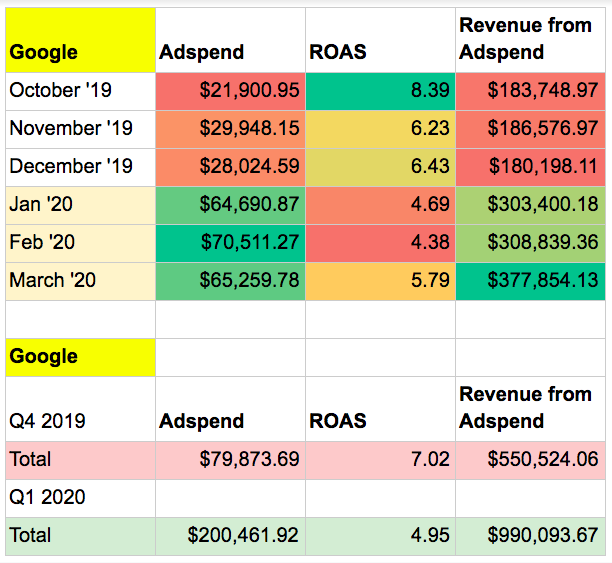
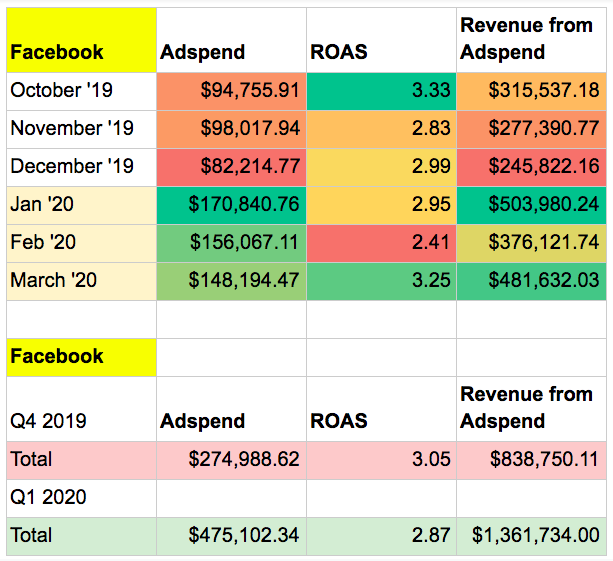
Book My Free E-commerce Marketing Consultation
9 Strategies We Used to Double E-commerce Conversion Volume (with a 3X+ ROAS)
This is our case study of how we doubled this e-commerce client’s conversion volume from Facebook and Google Ads while increasing ROAS.
If a company is a small business, mid market or enterprise, there's a reason why it's at that particular size: They haven't learned to do something yet. I created a visual of the three stages of any given account and what each hasn’t learned to do in order to grow:
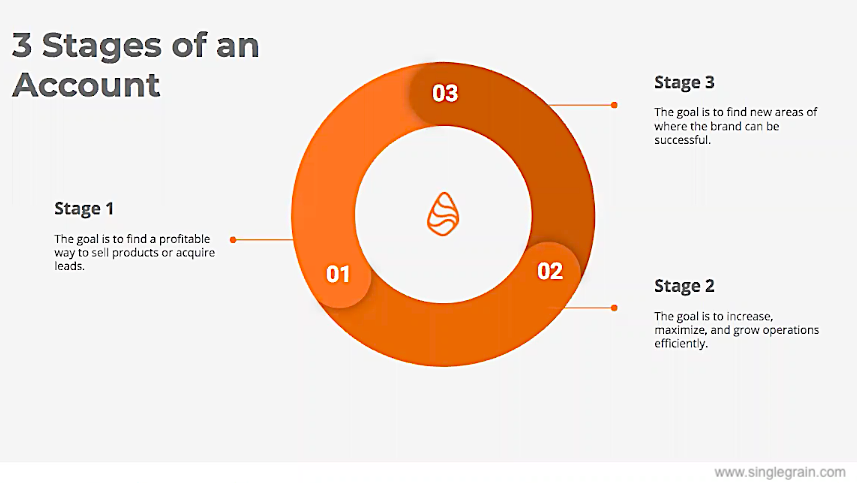 ThinSlim was in stage 2 – where they had found a way to sell profitably, but now want to ramp it up – so our job was to figure out how to rebuild the structure in order to scale.
ThinSlim was in stage 2 – where they had found a way to sell profitably, but now want to ramp it up – so our job was to figure out how to rebuild the structure in order to scale.
Here’s how we did that.
1) Rebuilt the Account Structure to Incorporate Branded and Unbranded Keywords
Our ad campaign model has four categories of terms: brand core, brand pillars, brand attributes, and long tail:

The first thing we did was prioritize where the budget's going for all four of these buckets. For a small budget, we won’t even do pillar, attribute or long tail. We'll just do core. All we're doing is identifying the most relevant high-converting areas and allocating our spend to those areas first.
TSF was only using Google search to promote their brand terms. That means that every term they were bidding on contained “ThinSlim Foods” in front of it or another branded product that they had. The problem with this was that it limited the amount of conversion volume they were able to achieve.
In order to get the client more conversions, we first looked at their Google account. Once we were able to implement our superstructure approach into the account, we were able to increase the ad spend by 10x while maintaining the ROAS goal.
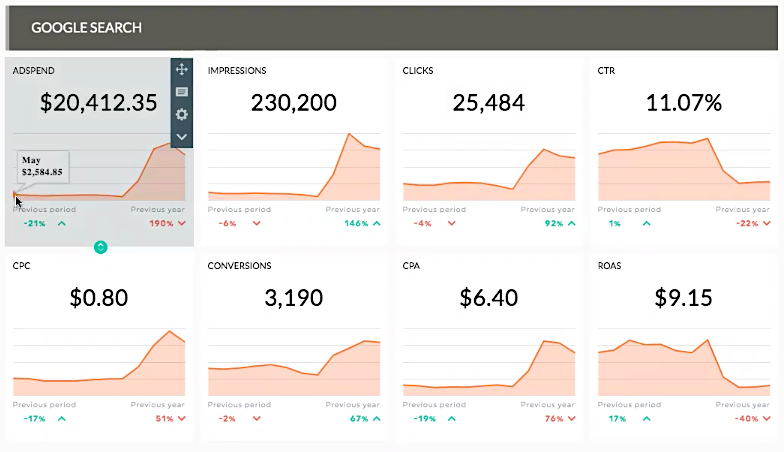
Now we’re getting them the volume that they want. You can even see the conversion volume. They had 1,600 conversions at $2.5K. Now we have 3,100 conversions at $20.4K:
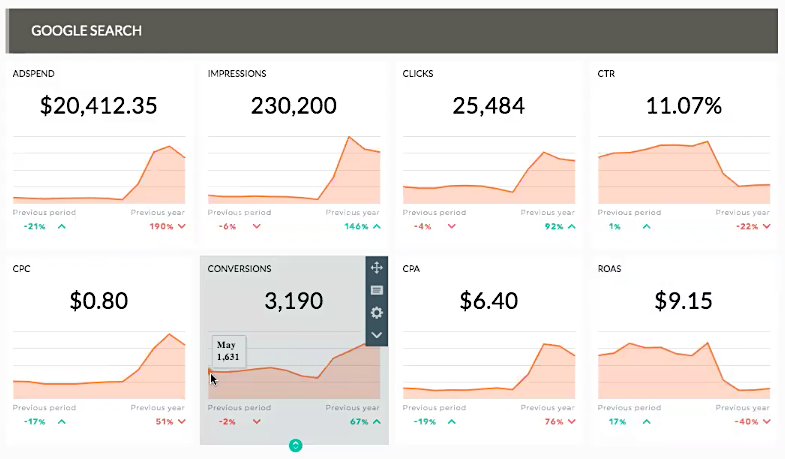
Since TSF was only capturing 40% of impression share for their search terms, that meant their ads were only showing up 40% of the time when people searched for their keywords.
In order to fix this, we switched them to a Target CPA conversion model, which allows them to automatically increase and decrease bids based on how likely an individual is able to convert. This increased the client’s impression share from 40% to 95%.
Takeaway: Try using Target CPA bidding, a Google Ads smart bidding strategy that sets bids to help get as many conversions as possible at or below your target CPA.
Book My Free E-commerce Marketing Consultation
2) Adjusted Messaging to Align with the Company’s Brand Archetype Instead of a Generic Tone
ThinSlim Foods was using a generic tone in their ads with smiley faces on the images and saying, essentially, “Hey, we're the number one bread company in the world.”
That may be, but your customer doesn’t really care about that. In this case, they care about losing weight or that the food tastes good or the quality of the products. They also want social proof so they can see that other people “just like me” are also using the product.
So we honed in on “The Innocent” brand archetype because this personality values and conveys simplicity, wholesomeness and honesty:
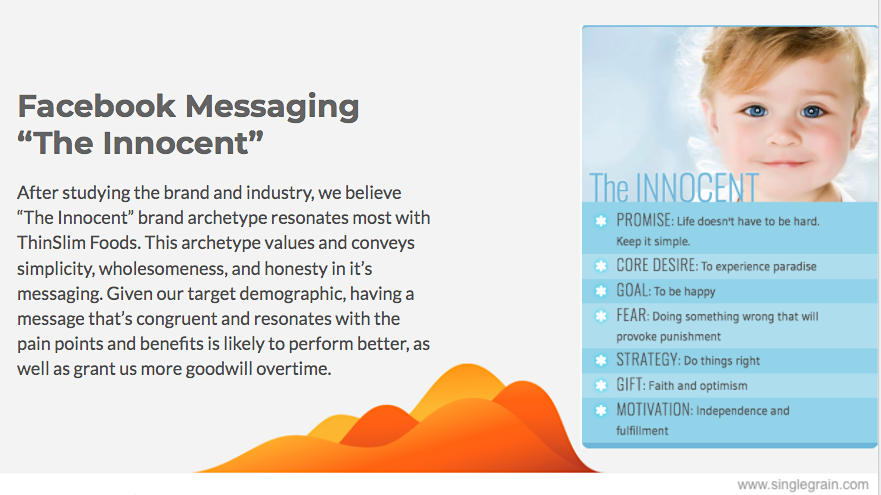 We improved the messaging and switched out the smiley face ads with nice food product shots.
We improved the messaging and switched out the smiley face ads with nice food product shots.
Here’s an old ad:
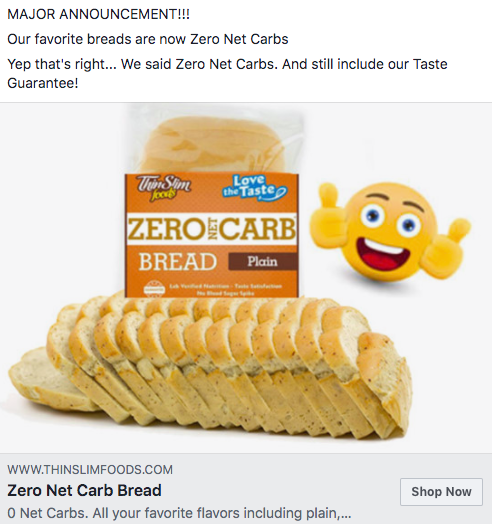
And here’s a new one:
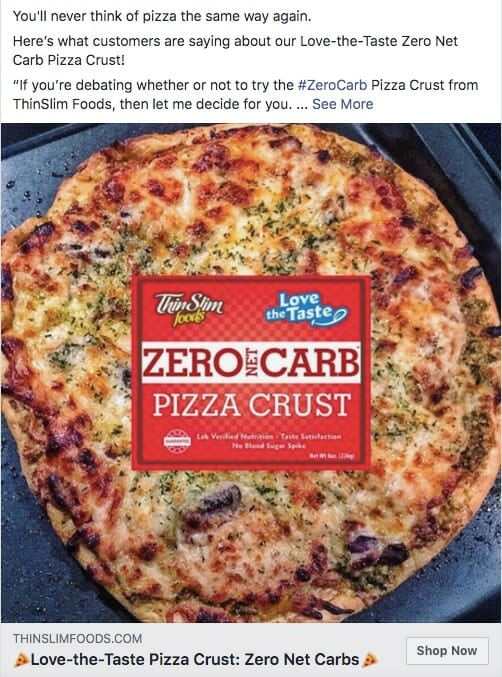
We also added some powerful customer testimonials.
For example: a testimonial from a woman via her Instagram saying how much she loved the product or how she was able to save a bunch of points on her Weight Watchers because of the product. Or this one below, in which the customer raves about how TSF promotes “dieting done right!”
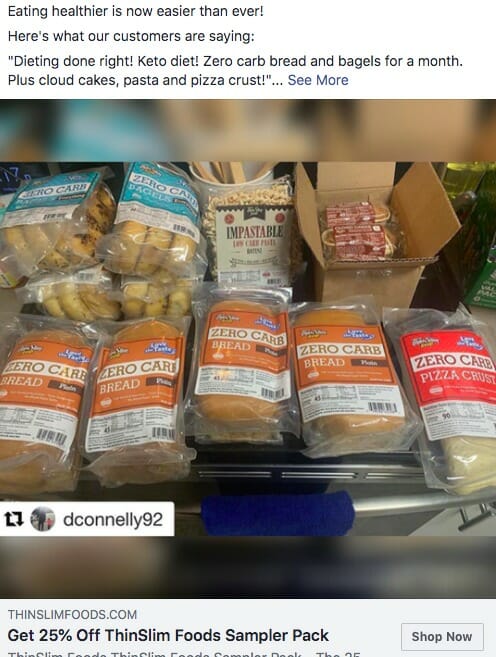
Takeaway: When it comes to your ads’ messaging, it must speak directly TO the customer and not ABOUT your brand. If they are concerned with weight loss, include that in the ad copy. And add high-quality product images that really excited the prospect.
Dive Deeper:
* Targeting Branded vs. SEO Keywords: Which Should You Focus On?
* How a Brand Persona Plays Into Effective ROI
* The Ultimate Guide to Developing Buyer Personas (with Templates!)
3) Allocated the Budget to the Most Relevant Audiences
In the case of TSF, there was no need to limit the age range of their audience. We saw that they were duplicating an ad set multiple times but just changing the age demographic by one point – so it was essentially the same audience, but from 23 year olds to 24 year olds.
We also saw that there was no need to exclude men, as they make up 25% of their audience. It’s obvious that women convert well, but there was a missed opportunity to go after men, if done appropriately.
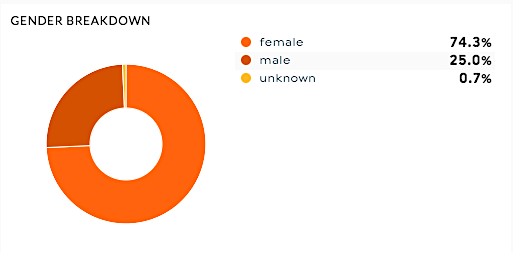
This strategy is used to leverage an audience that's already working without saturating it too much.
For example, let’s say you have 25 campaigns that are all spending $20 each versus putting those same 25 campaigns into one campaign and spending $800. Now in the $800 campaign, the CPCs could get really high because you're asking for a lot of reach in one audience. If you keep it spread out among more campaigns, it’s possible to accomplish the same amount of reach for a lot cheaper price.
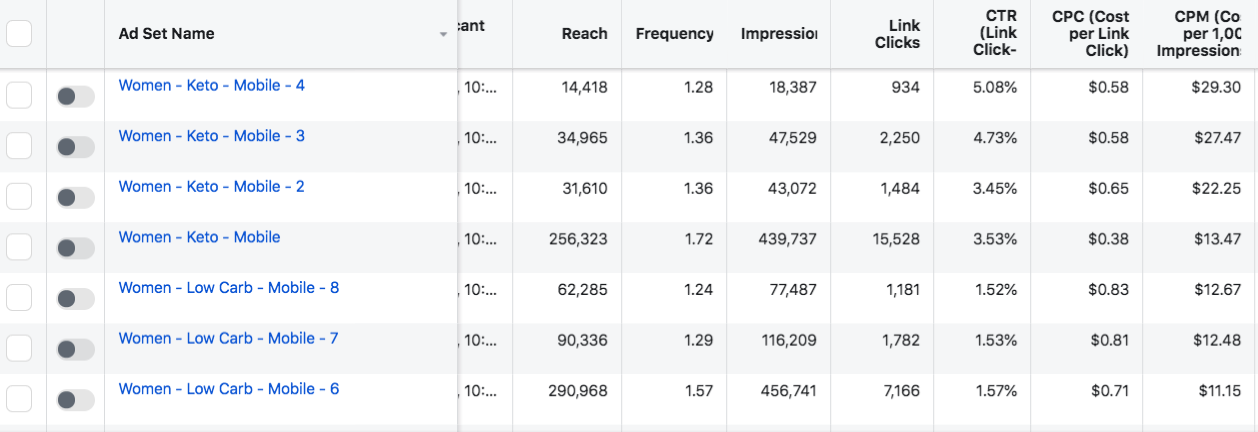
You can see that the age range is quite wide. Why wouldn't you take advantage of that?
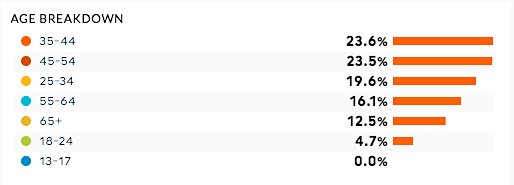
Takeaway: Have you been overlooking other demographics? Try branching out into different age groups or genders, but be sure that your messaging speaks to those audiences.
4) Opened Up Retargeting to ALL Products
When it came to retargeting, although the account did contain retargeting audiences, there were only two and they were constructed inefficiently. Bread and pasta were the only products being retargeted, so we opened up targeting to ALL products.
So if someone saw the ad and didn't convert, they then saw a message that said, “Hey, we noticed you didn't convert. Please come back to us. Here is our sample pack offer,” which was discounted 25%.
Takeaway: Have you tested retargeting visitors to ALL of your products? If not, start a new campaign to double-check. You can often increase ROAS by retargeting all products — not just your main winners.
Dive Deeper:
* How to Easily Set Up a High-Conversion Facebook Retargeting Campaign
* Retargeting 101: Why It’s Essential for Any Marketing Funnel
* How to Get 1,000 True Fans with Facebook Video Retargeting
5) Started Using Dark Posts
Facebook has a feature called dark post (the name has actually changed to “unpublished page posts,” but most marketers still use the old name), which essentially allows you to have the same ad in every campaign. That means all the ads share the same likes, comments, and shares.
But if you don't make the ads in a dark post format, each campaign or each ad group literally has a different ad. So if someone likes it in one ad group, that like doesn't show up in the next ad group.
Depending on how much money you're spending and your demographic, that social proof is going to make you look better. It could be the difference between someone saying, “I've never heard of these guys before” and “Oh, this must be a good product because they have a lot of attention.”
Takeaway: Get more tactical about promoting your inventory to a new audience. That doesn’t mean tons of extra work, it simply means implementing more efficient ways to get more conversions. On Facebook, use dark posts to leverage your social proof and encourage more people to click and purchase.
Book My Free E-commerce Marketing Consultation
6) Leveraged Dynamic Product Ads
In addition, TSF wasn’t using any smart tools or newer capabilities within Facebook or Google that can be more advantageous when you're trying to scale out and do things at a more efficient level.
Facebook has their own version of shopping campaigns called Dynamic Product Ads, which automatically promote your inventory to people who have expressed interest in your brand or product.
Since we started implementing Dynamic Product Ads, we have seen a 200% increase in conversion volume while maintaining our ROAS goal.
TSF's Facebook has a ROAS that's incredible and never seen before in the client’s account: The goal was 2.5 – we're at 5.3.
The ad spend back in December was $82K, and now (5 months later) it’s $71K:
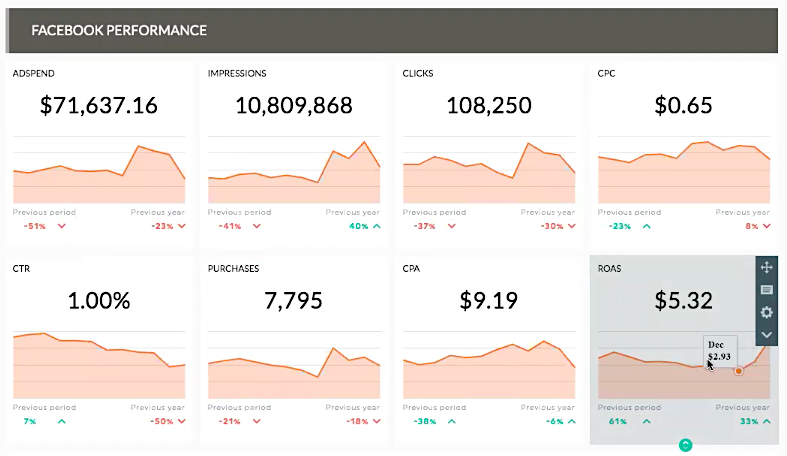
Takeaway: Get more efficient by using the newer capabilities on these platforms, which is particularly helpful when you’re trying to scale up. On Facebook, use Dynamic Product Ads to get your products in front of people based on their interests, not just whether they’ve visited your website.
7) Started Using Display Ads
When we took over the client’s Google Ads account, one of the first things we noticed was that they weren’t doing very well with display ads. The biggest red flag was that 42% of their budget had been going to mobile app placements, which are notorious for not converting well.
After making sure to negate all irrelevant placements, we launched a pay-per-conversion display campaign that quickly achieved a 2.2 ROAS and has steadily increased in conversion volume since its launch.
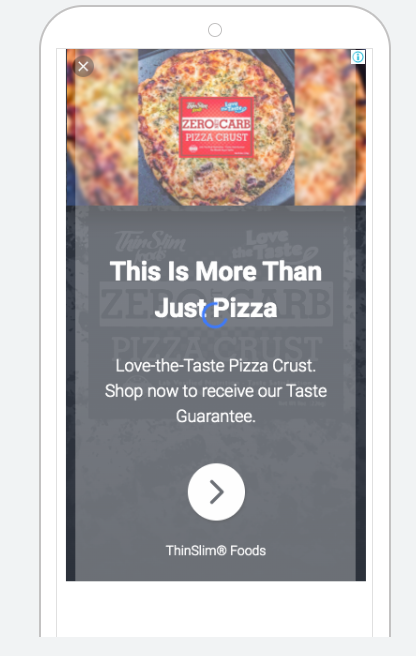
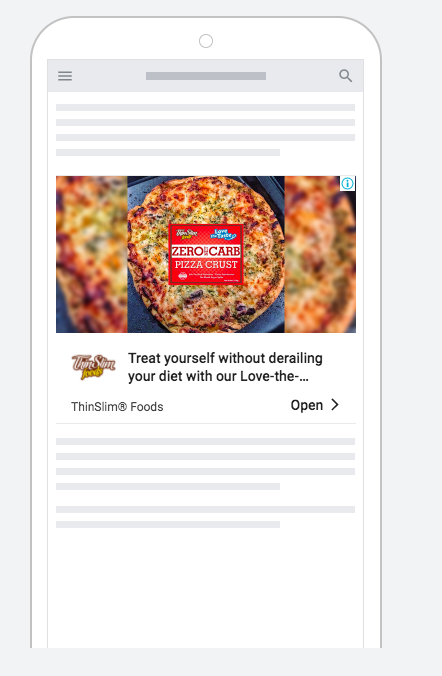
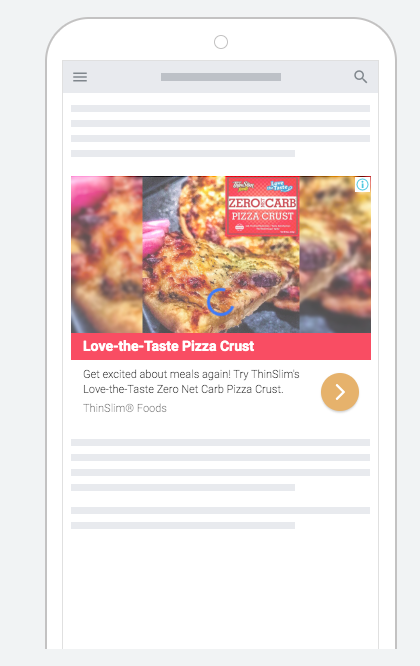
Takeaway: Display Ads can be a great channel to use for companies trying to increase conversions. As long as you monitor where ads are showing up, whom they are targeting, and leveraging new features like “pay per conversion,” most brands can perform well with display ads.
Dive Deeper:
* 5 Facebook Ads Trends You Can’t Ignore in 2020
* 6 Google Ads Trends You Can’t Ignore in 2020
* 7 Easy Ways to Optimize Your Facebook Ads
8) Started Using Dynamic Search Ads
Instead of just going for brand terms, which we were already maxing out in terms of impression share, we were able to go for non-brand terms, too. We used a new Google capability called Dynamic Search Ads and also some of their target ROAS conversion optimization goals to help make going after non-brand keywords more efficient and productive.
Before, we'd have to do it manually, which makes it very hard to control the CPCs. You have to pay very, very close attention and you have to do a lot of negative keyword targeting. Essentially, you may not even get the volume that we were getting because we're reacting to historical data.
With the smart campaigns, we're able to bid in real time, and not only bid off of historical data trends, but also bid off of projected future forecasts by utilizing those algorithms.
So just that more robust level of targeting and bid optimizations, and also a little bit of change in the structure and how we were going about getting these non-brand keywords, allowed us to achieve that extra scale.
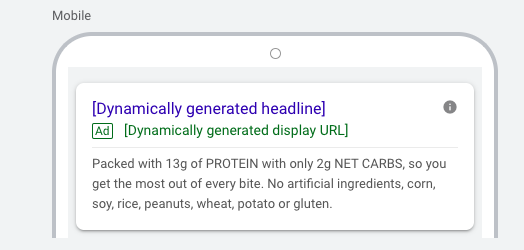
Takeaway: For some companies that tend to struggle to get conversions that don’t contain their brand terms, utilizing Dynamic Search Ads can be a great option. Not only are you able to allow the algorithm to source keywords and queries that are relevant to your business, but you’re also able to have it optimize toward your performance goal without manually having to micromanage every single aspect of the campaign.
9) Implemented Split Testing
TSF wasn’t doing much split testing with their ads. In most of the campaigns not only were there only one or two ads in rotation, but there were very insignificant differences between the ads.
For example, many of the ads had the same headlines, but the positions were switched. We also noticed there was an improper use of exclamation points, weak headlines, and no responsive search ads.
After taking action on those missed opportunities, we implemented a testing structure that would allow us to routinely understand if people were resonating with copy that promoted certain aspects of the product – and then build more in that direction.
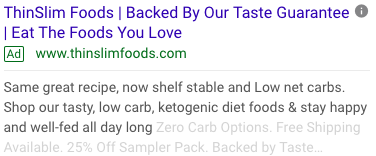
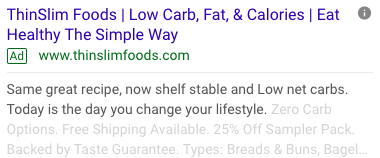
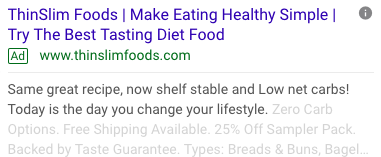
Takeaway: Don’t just guess what is or isn’t working with your ads. Split testing, which should be a key part of any conversion optimization strategy, will help you methodically improve your ads’ copy, image and CTA, making it easier for more people to convert.
Dive Deeper:
* What Is A/B SEO Testing?
* How to Run A/B Tests that Actually Increase Conversions
* How to Decide What SEO Tests to Run
Conclusion
ThinSlim Foods is easily one of our best-performing clients in COVID-19.
By using these eight strategies, we were able to double ThinSlim Foods’ conversion volume from Facebook and Google Ads while increasing ROAS. Here, again, are the specific results:
- Increased Google Search Conversion Volume by 2.5x
- Increased Google Shopping Conversion Volume by 2.5x
- Achieved the first ever profitable Google Display campaigns in the account’s history
- Achieved the first ever profitable Google Discovery campaigns in the account’s history
- Increased Facebook Conversion Volume by 2.5x
Our methodology is not about doing all this fancy stuff or using a ton of expensive tools. It's more that we are able to adapt to each clients’ situation, use newer capabilities within the platforms, and expertly perform essential data analysis. You need to be adaptable and you need a good system to be able to adapt at that level – and we’ve got it.
After working with TSF for about a year, here’s what they said about what they can do now because of our engagement that they weren't able to do before:
[What first impressed me was] the fact that spend continued to increase while still hitting most ROI targets. In addition to that, [it was] meetings with both the Facebook team and the Google team [which] demonstrated that you guys were plugged in deeply with their marketing teams, both in terms of being on the forefront of new programs and working with them directly on campaign improvements.
But the easiest thing is to point to a large increase in sales in all the different business silos, which was largely driven by the ad spend.
Need help growing your e-commerce brand's conversion volume? We can help! Click below to get a free proposal.
Book My Free E-commerce Marketing Consultation
Check out some more case study content:
- How Adobe Does Marketing: A Case Study
- [Case Study] The Content Sprout Method: How to Use Strategic Content Marketing to Grow Your Traffic From 0 to Millions
- 9 Successful Digital Marketing Case Studies That Increased Revenue
- Chapter 3: Case Studies – Companies Doing Blockchain Marketing Well
- 9 Cold Email Case Studies with Great Reply Rates
- 7 Successful Drip Campaign Case Studies
- 13 Conversion Rate Optimization Case Studies
The post Ecommerce Advertising Strategy: How We Doubled PPC Sales for ThinSlim Foods (w/ a 3X ROAS) appeared first on Single Grain.
from Single Grain https://ift.tt/3hsAZuh

No comments:
Post a Comment